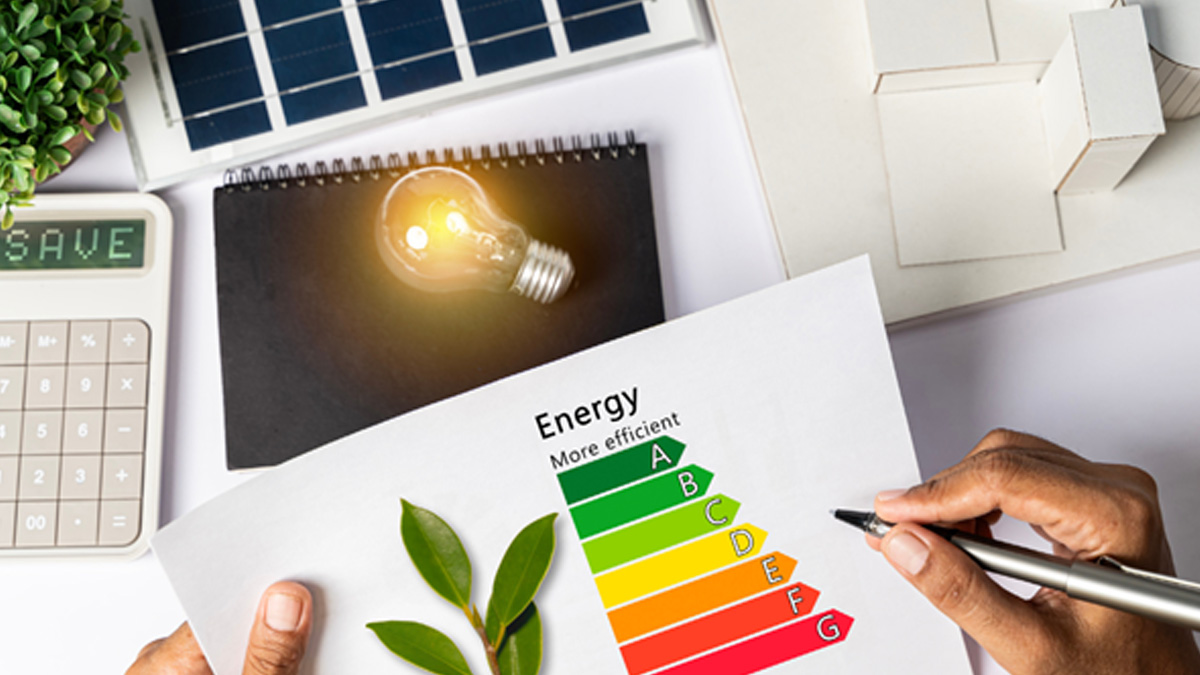
Heard the one about farting cows being a major contributor to climate change? Well, we haven’t worked out a solution to that per se. But what if we told you that it’s possible to transform their manure, and other organic waste, into fully renewable, carbon-neutral biomethane that can power the gas appliances in your home?
Australia produces around 48 million tonnes of organic waste per year from domestic and industrial sources. This accounts for a portion of national greenhouse gas emissions.
Thank goodness that technology exists today to turn organic waste, including green waste, food industry byproducts and agricultural residues - into a biogas, a renewable gas that can be cleaned and upgraded to biomethane that can be used as energy in your home.
Keep reading to find out how biomethane works and some frequently asked questions about this game-changing renewable energy source…
• What is biomethane and how is it different from traditional natural gas?
Biomethane has the same chemical properties as natural gas but is derived from biogas instead of the fossil fuel-based natural gas predominately used today.
Biogas can be produced from various forms of organic material, such as green waste, food industry byproducts, agricultural and industrial waste. Organic material is placed within large, enclosed tanks, free from oxygen where microorganisms break down the organic material and release biogas. When processed and cleaned, it creates a carbon-neutral, renewable energy source known as biomethane.
• How is biomethane produced or where does it come from?
Biomethane is derived from biogas. Biogas is produced through a biological process known as anaerobic digestion, where microorganisms break down organic material in an oxygen-free environment.
The resultant biogas is predominantly methane (60%), with the rest being carbon dioxide and trace elements of other products such as hydrogen sulphide, nitrogen, and oxygen.
Through a process called biogas upgrading, biogas becomes a nearly pure methane known as biomethane. Biomethane is interchangeable with natural gas because it has the same chemical properties, allowing it to be seamlessly blended into existing gas networks and used with appliances without modification.
The difference is that when processed and cleaned biomethane is carbon-neutral, potentially making it an effective method of decarbonising homes, businesses and industry.
• Why is biomethane considered a renewable energy source?
Instead of leaving waste to degrade in the environment and potentially release methane into our atmosphere, the process within aneorobic digesters captures this methane and carbon dioxide which we call biogas.
Once the biogas is cleaned and upgraded the resultant biomethane can then be blended into our existing gas networks and used interchangeably with natural gas. In doing so, it supports decarbonisation of hard to abate sectors, has the potential to generate skilled renewable energy jobs^ in the energy sector and can provide an economic opportunity in regional agricultural areas.
“Waste derived biomethane provides solutions across multiple sectors,” says Richard Bartlett, our Senior Advisor - Renewable Gas Development. “And it’s not just providing dispatchable renewable energy, it’s also playing a role in the circular economy by recycling organics & their nutrients for beneficial reuse on productive land, whilst driving regional development & jobs. The ultimate outcome is the decarbonisation of AGIG’s network & eligible customers”.
• What are the environmental benefits of using biomethane as compared to fossil fuels?
In Australia, much of our food waste is still sent to landfill, where, if not properly managed, it can release methane into the atmosphere, contributing to greenhouse gas emissions.
Additionally, some industrial and agricultural activities also generate organic waste, and capturing these materials for biogas production provides a higher-value use for these resources, helping to mitigate their potential environmental impact. And the list goes on.
While these are just two examples, they illustrate how biomethane can be part of the solution. The use of biomethane as a renewable energy source has the potential to help reduce reliance on fossil fuels for everyday activities like cooking, heating, and hot water use in homes and businesses.
By diverting organic waste from landfills and utilising it to produce biomethane, there is potential to reduce emissions and contribute to Australia’s renewable energy targets. While the full impact of biomethane on Australia’s renewable energy targets is still being explored, it presents an opportunity to support progress toward a more sustainable energy system.
• Is it better to compost organic waste rather than convert it to biomethane through anaerobic digestion?
While composting is a valuable method for managing organic waste (and an excellent way for households to manage their own organic waste and provide nutrients to their gardens), anaerobic digestion offers several advantages when it comes to larger scale waste management that make it a better outcome for both soil health and reducing emissions.
When it comes to handling large volumes of waste, anaerobic digestion requires less space and much less time than large scale composting would. And instead of the byproduct methane being released into the atmosphere, anaerobic digestion allows for it to be captured and re-used as biomethane. Last but not least, the digestate that is produced from the anaerobic digestion process is rich in nutrients and can be used to improve soil structure and fertility, similarly to compost.
So, in short – when there is a large volume of waste, anaerobic digestion is a faster and more efficient composting process that also allows us to capture the methane to use as renewable gas.
• Are there any limitations with producing biomethane?
Although the science is straightforward - fill an airtight tank known as an anaerobic digester, then let the bacteria get to work to produce a methane-rich gas - getting the operation right can be tricky.
While Australia is still in the early stages of biomethane production, it is already being produced around the world. But progress is being made, Jemena’s Malabar Biomethane Injection Plant being the first project in Australia to produce biomethane and inject it into a gas network. The plant is a result of a partnership with Sydney Water, which is upgrading biogas produced from organic waste at the Malabar Water Resource Recovery Facility.
Until the technology is more widely adopted across the country, the main limitations will be cost and scale. However, increased uptake of biomethane and biogas plants, along with partnerships to secure organic matter, will help reduce costs and significantly boost the supply of biomethane.
• To create biomethane you need energy to run the biogas plant, is that renewable?
For biomethane to be considered a renewable gas, projects like Jemena’s Malabar facility must receive GreenPower Certification. To receive GreenPower Certification a renewable gas facility must meet specific criteria (called Certification Rules) in the production of its biomethane or hydrogen when it comes to electricity consumption, water consumption and the management/use of any bi-products. So yes, the energy used to power the biogas plant is renewable.
In the case of the Malabar facility the Certification Rules under the GreenPower scheme are published by the Department of Climate Change, Energy, the Environment and Water. GreenPower is a national renewable energy accreditation program, administered by the NSW Government on behalf of the National GreenPower Steering Group made up of the New South Wales, Victoria, and South Australia governments, with the Australian Capital Territory, Northern Territory, Tasmania and Queensland governments as observing members.
You can find more details about the Malabar certification here.
• Are there any safety considerations?
The safe operation of our gas networks is the most critical thing we do. New technology and best practice network management systems ensure a high level of public safety and reliability of supply.
At AGN, we are committed to managing our networks safely for the community we operate in and for our staff. Our vision is to maintain a culture where managing health and safety is a way of life and where we are always looking to improve.

Given the benefits of biomethane, it’s little wonder why nations like the US, the UK and Germany are advocating strongly for biomethane and investing heavily in it as a renewable energy source. Australia has the potential to join them as leaders in renewable biomethane.
Australia is at a pivotal moment in its renewable energy journey. And the development of biomethane as a renewable energy source that also helps reduce our organic waste is a progressive step that highlights the sustainable possibilities for homes and cooking in the future, a future where our very waste can help power our homes!
Biomethane fueling the cooktops in the MasterChef kitchen marks a landmark first. Hopefully it can be a catalyst for public opinion, awareness, and ultimately a steppingstone towards effectively and efficiently decarbonising the gas in our networks that we rely on to power our homes and businesses.
A diverse, fully renewable energy landscape is possible for every home and business in Australia. Especially if we remain open minded about innovative technologies and sources like biomethane.
Learn more about biomethane here
All figures quoted in this article were correct at the time of publishing (May 06, 2024).
^ https://arena.gov.au/assets/2021/11/australia-bioenergy-roadmap-report.pdf(pages 5 + 10)




